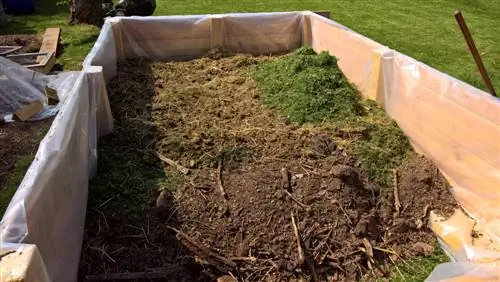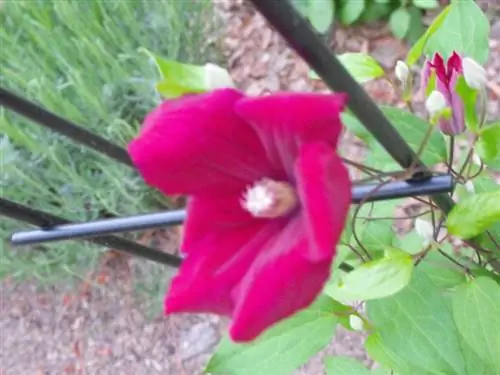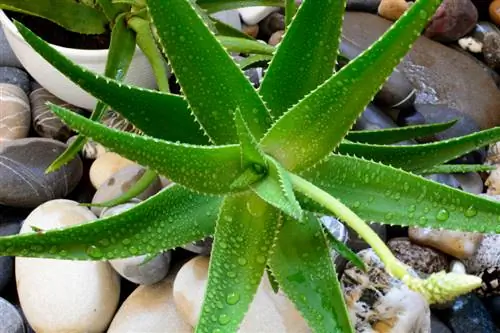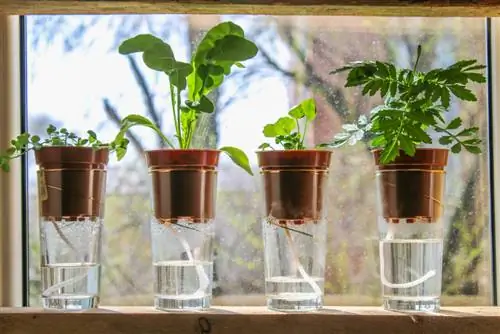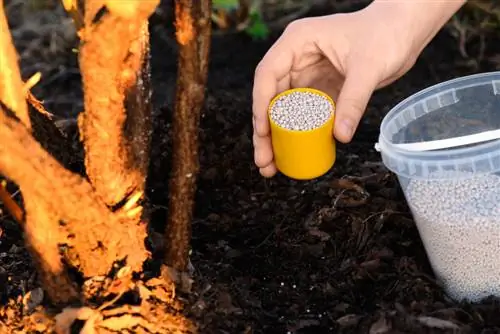- Author admin [email protected].
- Public 2023-12-16 16:46.
- Last modified 2025-06-01 06:02.
During the hot summer months, the compost heap can quickly dry out. You can recognize this, among other things, by a cracked, crumbly surface - and by the fact that ants suddenly appear on it. However, compost that is too dry is not an ideal environment for the compost and earthworms that are so important for decomposition and will therefore retreat. The result is that the rotting process stops. You can prevent this by regularly reaching for the watering can.
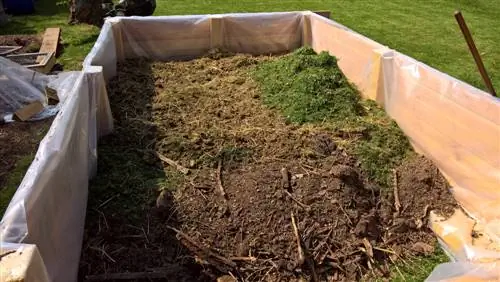
How should you water and keep the compost pile moist?
To keep the compost pile moist, you should water it regularly, especially in dry and hot weather. Chop holes in the pile and pour water evenly with a watering can. Also, layer wet and dry material alternately to prevent drying out.
Why you should water compost
A compost heap needs sufficient moisture to keep the rotting process going inside. The earthworms and compost worms responsible for this only feel comfortable in a warm and moist environment, which is why they retreat when it is dry. But it is not just the disturbed rotting that is an important reason for watering the compost: the heaps are often a source of fire as they can quickly ignite themselves, especially in sunny and hot locations. You can effectively counteract this danger with a strong pour from the watering can.
How to keep the compost pile moist
There are many reasons why a compost pile can dry out. The most important thing is the location: If the compost is in a sunny and warm place, it will dry out more quickly due to its location. However, you should not move it if possible, as the compost worms, which are so important for the rotting process, also value such a location. Instead, water more frequently so that the material remains sufficiently moist. Another common reason, however, is the incorrect composition of the pile: if a lot of dry, perhaps even woody plant parts are used for composting, it will dry out more quickly. It is better to layer the compost correctly:
- Always only layer thin layers of different materials on top of each other
- dry materials are always followed by wet ones, such as grass clippings or fruit and vegetable scraps
- If possible, chop up woody plant parts and moisten them thoroughly before filling them
- Always add a layer of ripe compost soil every now and then
- this inoculates the material with the microorganisms that are important for rotting
Watering compost properly - this is how it works
In order to water the compost heap effectively and deeply - after all, the valuable moisture should also penetrate into the deeper layers - it is best to use a garden tool with a long handle, such as a hoe (€139.00 at Amazon). Now poke deep holes into the pile at regular intervals with the stem first. Now water the compost using a watering can with a fine attachment - this will distribute the water better and more evenly and also reduce the water pressure.
Tip
Although compost heaps should ideally be located in sunny and warm locations, they benefit from shade sources such as shrubs or sunflowers planted around them.

